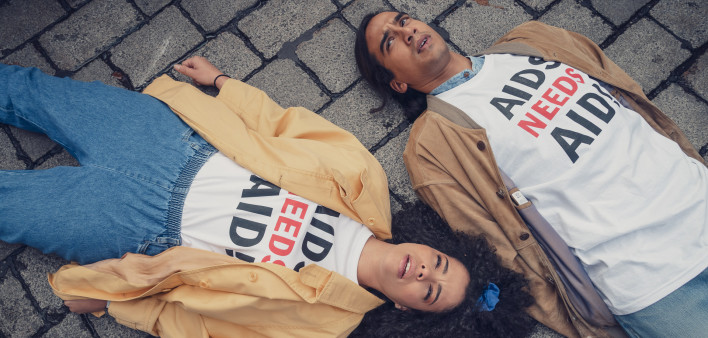Another fab British import arrived stateside this year: the five-part miniseries It’s a Sin, which follows a group of young, mostly gay friends who arrive in London as the AIDS crisis unfolds in the early 1980s. The show, which streams on HBO Max, takes its name from a Pet Shop Boys song and is penned by hitmaker Russell T. Davies, who brought us the original Queer as Folk. It stars British pop star Olly Alexander and American actor Neil Patrick Harris, both of whom are gay.

Promotional art for “It’s a Sin”Courtesy of HBO Max and Channel 4

Olly Alexander as Ritchie Tozer in “It’s a Sin”Courtesy of HBO Max/Ben Blackall
It’s a Sin premiered in January on Britain’s Channel 4, becoming its most watched show ever while raising HIV awareness, boosting testing nationwide and, now, inspiring heated discussions across the globe about telling HIV stories (look up the must-read blog post “How’d You Get It?/Such a Shame” by Brian Mullin on Substack.com). Some AIDS advocates, however, have expressed concern that viewers might find the show scary and stigmatizing. Of course, in the 1980s, HIV was, in many respects, a death sentence. But we’ve come a long way. Effective treatment arrived in 1996, and now we know that people living with HIV who take medication and maintain an undetectable viral load cannot pass the virus sexually, a fact known as Undetectable Equals Untransmittable (U=U). HIV advocates at Prevention Access Campaign have worked to spread this hopeful message to coincide with the release of the miniseries. HBO, for its part, has a landing page with updated information about HIV.
Is that enough? Long-term survivor Mark S. King writes that It’s a Sin “reinforces dangerous, stereotypical myths about gay men [as fixated on sex as a result of being shamed by their families] and people living with HIV.” By ignoring the “heroic history” of many gay men—like those who advocated for health care—Davies feeds into the trope of the AIDS monster who willingly spreads the virus, King writes, adding that the cliché has led to dangerous HIV crime laws that many advocates are still fighting to have repealed.

Neil Patrick Harris as Henry Coltrane and Calum Scott Howells as Colin Morris-Jones in “It’s a Sin”Courtesy of HBO Max/Ben Blackall

Omari Douglas as Roscoe Babtunde in “It’s a Sin”Courtesy of HBO Max/Ben Blackall
For Davies, It’s a Sin is largely autobiographical—and a chance to tackle a subject he avoided in Queer as Folk, which premiered in 1999. (The U.S. remake, which he didn’t write, did feature HIV storylines.) In defense of his choice, Davies has said he didn’t want gay men’s lives to “be defined by disease.” What’s more, he told the New York Times, “If you look at my work over the last 20 years, I was always telling the story of sex leading to death, which I do think was very profoundly molded into me during the ’80s.”
Guess How Many TV Characters Have HIV

Mj Rodriguez in “Pose”(TV) istock; (Pose) Courtesy of FX
In the 2020–2021 TV season, out of a total of 773 series regulars, only three characters were living with HIV—and all three were on FX’s Pose, which follows the late 1980s and early ’90s underground ball scene in New York City. This marks a “drastic decrease” from the previous year, which included nine characters with HIV, according to study findings from GLAAD, an advocacy group that focuses on LGBTQ representation in the media. The good news? Programming saw an uptick in LGBTQ people of color. The importance of representation on television has grown exponentially in the past year, GLAAD notes, because more people are home watching TV during the COVID-19 pandemic and looking for on-screen connections.







Comments
Comments